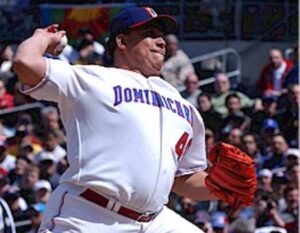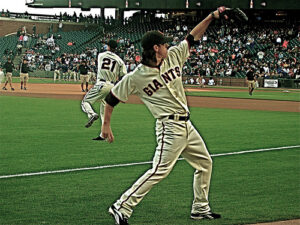Throwing Programs: The Top 4 Long Toss Mistakes
In part 1, I made the case for long toss as an effective addition to a throwing program. Today, we answer the question, “Why don’t some pitchers respond well to long toss?” Let’s look at the top four reasons why someone may not be approaching long toss optimally.
1. They structure it incorrectly.
By far, the biggest mistake I see from pitchers when they’re long tossing is that they don’t utilize compression/pull-down throws at the end of the session. These throws teach the pitcher to get on top of the ball and bring the release point down to where it should be with pitching – but they do all this with the increased arm speed you get from long tossing. Effectively, you use compression throws to transition from your longest throwing distance to a flat ground session (this is a practice you’ll see from a LOT of MLB starting pitchers in pre-game warm-ups before they ever step foot on a mound).
Typically, our guys use a compression throw every 45-60 feet on the way back in (it almost amounts to a brisk walk back in). So, if a pitcher went out to 300 feet with his long toss, he’d take compression throws at about 250, 200, 150, 100, and 60 feet. I joke with guys that the last throw at 60 feet should pretty much scare the crap out of their throwing partners. If you’ve seen Trevor Bauer crow-hopping downthe mound for his last warm-up pitch prior to every inning, you know what I mean. Not surprisingly, Bauer is an Alan Jaeger/Ron Wolforth long toss disciple. Here’s what Baseball America had to say about it: “[Bauer] starts behind the rubber, runs over the mound and throws as hard as he can to the plate, from about 54 feet. I’ve heard reports that those throws have registered 100 mph…”
Some guys – particularly those with a history of control issues and the guys who are trying to tinker with their mechanics – are wise to go into a brief flat-ground (or regular) bullpen right after these compression throws. It’s a good chance to transfer the arm speed and athleticism of long toss into a little more of a sport-specific action. I’ve also seen quite a few pitchers who have improved their change-ups considerably by long tossing for part of the session with their change-up grip, and then integrating it into one of these post-long-toss flat ground or bullpen sessions. It helps with keeping the arm speed up in pitchers who tend to slow down the arm for change-ups.
2. They become good throwers and not good pitchers.
I’ll be straightforward with this one.
If you can long toss 350 feet, but pitch at 80-82mph, you can definitely stand to cut back a bit on your long tossing to spend more time focusing on mound work to sync things up and use that general motor potential to your advantage.
If you can long toss 350 feet, but have a 1:6 strikeout:walk ratio and have pitches hitting the backstop, you can definitely stand to cut back a bit on your long tossing to spend more time focusing on mound work to sync things up and actually throw strikes.
If you can long toss 350 feet, but are getting shelled because you just throw a very straight 93mph and don’t have any secondary pitches, you can definitely stand to cut back a bit on your long tossing to spend more time focusing on mound work to sync things up and learn some other pitches. The average fastball velocity is higher in low-A than it is in the big leagues, you know…
3. They think long toss covers all their needs.
There are a ton of different factors that contribute to pitching success and longevity. Once you can throw a ball a long way, there is a tendency to think that you’ve done what you need to be successful, but in reality, there are a lot more things to address to prepare your body and long toss is still pretty specific, in the grand scheme of things. As is often the case, the greatest benefits are usually derived from doing the things that you don’t do particularly well (yet). Bartolo Colon, for instance, might be able to long toss 330 feet, but he might have a heart attack on the light jog to the outfield to partake in that long tossing session.
4. They don’t long toss on a straight line.
It seems like a no-brainer, but you should throw on a straight line. If the guy 250 feet away is 20-feet to the left of “center,” you’re teaching yourself to either stay closed or fly open with your delivery. Stand on the foul line or line yourself up between foul poles, if you’re looking for a quick and easy way to “get aligned.”
As you probably appreciate now, while long toss is usually a tremendously valuable inclusion in most throwing programs, it isn’t a perfect fit for everyone – and that’s why each unique case must be considered individually.
Don’t forget that long toss guru Alan Jaeger has put his popular Thrive on Throwing DVD on sale for 25% off for my readers for a limited time only. Click here to learn more.
Sign up for our Newsletter and Receive a Free Copy of the Cressey Performance Post-Throwing Stretches:





